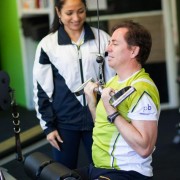OPTION 2: Seven Week Online Training Mentoring Program
This is a seven week program designed for people looking for on-going accountability, direction, feedback and support from their Coach as they move towards creating forever change. This option consists of:
• A 30 minute initial consultation via telephone, email, SKYPE or face to face to explore and evaluate your current lifestyle habits, your exercise goals and ideas to get you organised to achieve the best possible results.
• A second 30 minute consultation to discuss your program, detailed goals and an achievable action plan.
• A comprehensive personalised 6 week cardio and resistance training program.
• Exercise & Food Diary
• Nutritional guidelines.
• Weekly 15 minute telephone consultations to discuss your progress, answer questions, provide feedback and support to assist you in achieving your goals.
• Unlimited email support.
• A 15 minute post-program follow-up consultation to discuss results, answer questions and explore further actions.
Book Now for $475.00
[wp_cart_button name=”Seven Week Online Training Mentoring Program” price=”475.00″]



